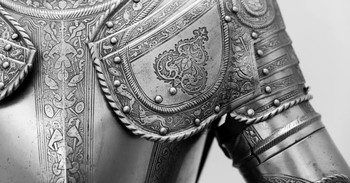The name “Easter” was derived from “Eostre,” “originally a Saxon word (Eostre), denoting a goddess of the Saxons, in honour of whom sacrifices were offered about the time of the Passover.” This very fact causes many to wonder if Easter is really a pagan holiday and if it should be celebrated by Christians.
The origins of Easter are wrapped up in a celebration of seasonal renewal that has taken place in numerous cultures for thousands of years around the time of the Spring Equinox. Some argue that even the Christian version of Easter merely perpetuates a pagan age-old, familiar theme of resurrection rather than honoring an actual person or event in history.
Get your FREE Easter Prayer and Scripture Guide here! Print and share beautiful reminders and blessings this Easter season.
Pagan Origins of the First Easter
According to an ancient “Sumerian legend of Damuzi (Tammuz) and his wife Inanna (Ishtar), [...] Tammuz dies, Ishtar is grief–stricken and follows him to the underworld.” Here, “‘naked and bowed low’ she is judged, killed, and then hung on display. In her absence, the earth loses its fertility, crops cease to grow and animals stop reproducing. Unless something is done, all life on earth will end.”
Inanna is missing for three days after which her assistant seeks help from other gods. One of them goes “to the Underworld” gives Tammuz and Ishtar “the power to return to the earth as the light of the sun for six months.
After the six months are up, Tammuz returns to the underworld of the dead, remaining there for another six months, and Ishtar pursues him, prompting the water god to rescue them both. Thus, were the cycles of winter death and spring life.” Since this myth was discovered on tablets dating back to around 2500 BC, Tammuz and Ishtar might be the protagonists of the first pagan Easter story.
Cultural Easter Themes
Commentators have cited numerous reasons why cultures have chosen to celebrate Easter in some form. Popular themes have included:
1. Light conquering darkness; Barren winter giving way to spring birth
2. Life conquering death; Good vs. Evil
3. Virgin birth; Sacrifice
Often, these themes are regarded as part of recurring cycles, like the seasons. Every spring, the world comes back to life. Flowers emerge. Birdsong fills the air. Animals give birth to their young. Death always leads to new life. Some elements, such as the three-day timeline and the hero going to Hell, are also scattered among the myths.
Pagan Easter Traditions
“All the fun things about Easter are pagan. Bunnies are a leftover from the pagan festival of Eostre.” Hot cross buns are related to “Israelites baking sweet buns for an idol, and religious leaders trying to put a stop to it.” Eventually, “defiant cake-baking pagan women” were successful and a cross was added to the buns to Christianize them.
Today we eat chocolate bunnies and hunt for colorful eggs. The hare and egg are symbols “associated with Eostre, representing the beginning of Springtime. In Germanic mythology, it is said that Ostara a.k.a. Eostre “healed a wounded bird she found in the woods by changing it into a hare. Still partially a bird, the hare showed its gratitude to the goddess by laying eggs as gifts.”
Jesus, Hero among Many
One writer draws “parallels between the story of Jesus and the epic of Inanna.” This “doesn't necessarily mean that there wasn't a real person, Jesus, who was crucified, but rather that, if there was, the story [...] is structured and embellished in accordance with a pattern that was very ancient and widespread.”
Other sacrificial heroes have included Attis, lover of Cybele, both of them gods, but Attis “was born of a virgin.” “Attis was Cybele’s lover, although some sources claim him to be her son.” Attis “fell in love with a mortal and chose to marry.”
In response to Cybele’s rage, Attis “fled to the nearby mountains where he gradually became insane, eventually committing suicide.” She regained her sanity, and “appealed to Zeus to never allow Attis’s corpse to decay.” Every year, “he would return to life during the yearly rebirth of vegetation; thus identifying Attis as an early dying-and-reviving god figure.”
Other gods associated with resurrection include Horus, Mithras, and Dionysus. “Dionysus was a divine child, resurrected by his grandmother. Dionysus also brought his mum, Semele, back to life.” The Sumerian goddess Inanna, or Ishtar, was hung naked on a stake and was subsequently resurrected and ascended from the underworld.
Jesus, the One and Only
Many of these stories are similar to the Christian account. Jesus was born of a virgin; He died on a cross and was resurrected. But there are foreshadows of the crucifixion from Genesis to Malachi; in Sarai’s barren womb brought to life; in desert springs (Isaiah 43:19), Ezekiel’s dry bones; and the Passover. The entire Bible is God’s story of Jesus — not a fictional story, but the history of creation, fall, and redemption.
Events in Genesis are dated to before 4000 BC, and the offering of Isaac to around 2054 BC. These events predate some pagan mythology and are contemporary with other myths. Yet, even when men and women worshipped false gods, the Lord had the last word. Robby Gallaty, Senior Pastor of Long Hollow Baptist Church in Hendersonville, Tennessee, connects the nine plagues in Egypt with Egypt’s gods: Khnum, River god (blood), Heket, frog goddess (frogs), Imhotep, healing god (boils), and so on.
The point was “God, Himself, was showing He reigns supreme over any false gods who try to usurp Him.” We can adjust this statement: false gods had no power to try anything; no power to act. Elijah declared to the Baal worshipers, Israel’s enemies, “the god who answers by fire — he is God” (1 Kings 18:24). Baal was impotent. “Then the fire of the Lord fell and burned up the sacrifice, the wood, the stones and the soil, and also licked up the water in the trench” (1 Kings 18:38).
It is also no coincidence that Christianity persists today with the number of believers rising daily, two millennia after Christ’s death and resurrection. Christ’s existence is historically verifiable, and His resurrection is backed by evidence. Meanwhile, the myths of Sumeria and Egypt have retained all the power of a chocolate Easter bunny.
Christ “Patterned, Promised, Present”
Glenn Scrivener wrote that “the Old Testament is extraordinarily Jesus-shaped.” He was “patterned,” “promised,” and “present” even before the Virgin Birth. He describes the “substitutionary pattern” beginning in Eden after the Fall where “the guilty [...] are robed by an alien righteousness — clothed in Christ.”
Here, “God promises ‘the seed of the woman,’” the offspring which “would crush the head of the house of the wicked” but “at great cost to himself.” Christ was present as the one “who walks with his most favored creatures in the cool of the day.” Christ is patterned, promised, and present with Abraham and Isaac, at the Exodus, and numerous other places in the Old Testament.
While pagan gods were remote and impotent, the Christian God is omnipotent yet personal. Christ was the one and only sacrifice for all sin, for all time, for all who believe; not as part of a seasonal cycle.
Christians die to sin, share in Christ’s suffering, and inherit the Kingdom of Heaven as co-heirs with Christ. They enjoy the hope of eternal life. It’s no coincidence that Jerusalem would be built on the site where Isaac was nearly sacrificed. Outside the city gates, Jesus was crucified.
Is it Okay for Christians to Celebrate “Easter?”
“Easter” is only a name, adopted and transformed over centuries to become a Christ-centered reference until recent generations where many young people no longer recognize the name of Jesus as anything more than an expletive.
However, using the name Easter “is not a problem” because “the origin of the word does not mean that the word is bad.” If we want to “be consistent and avoid using [pagan] words,” Christians will also have to find new names for the planets and the days of the week.
“Christians remember that Jesus, after dying on the cross, rose from the dead, showing that life could win over death. For Christians, the egg is a symbol of the tomb [...] while cracking the egg represents Jesus' resurrection. In the Orthodox tradition, eggs are painted red to symbolize the blood Jesus shed on the cross.” Easter traditions can be redeemed, and the fun of Easter is still permissible.
Meanwhile, God examines the heart. “If you have not yet found out that Christ crucified is the foundation of the whole volume, you have read your Bible hitherto to very little profit. Your religion is a heaven without a sun, an arch without a keystone, a compass without a needle, a clock without spring or weights, a lamp without oil.”
What Does All This Mean?
Christ died for us personally, willingly, and lovingly. He rose for us, victorious over our sin, and He calls us to live eternally with Him in sinless paradise. Mythology has bequeathed us with painted eggs and chocolate: short-term amusement, nothing as the joyous or lasting as a believer’s hope in Christ.
©iStock/Getty Images Plus/los_angela





